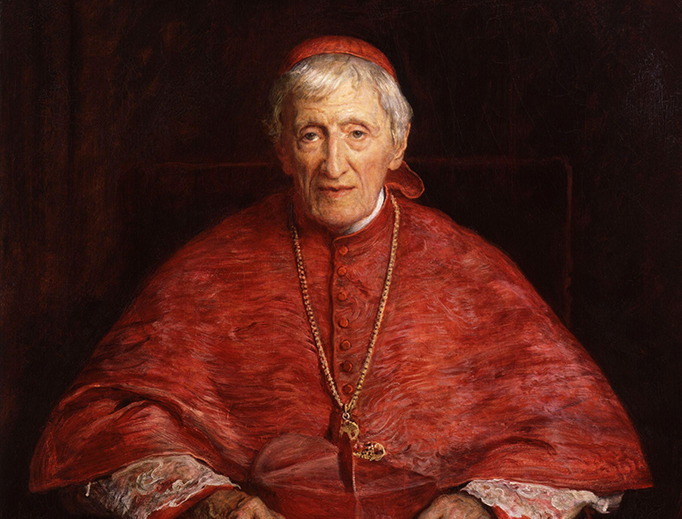“To Live is to Change”: My New View of Bl. John Henry Newman
“To live is to change, and to be perfect is to have changed often.”

One of Blessed John Henry Newman’s great adages is, “To live is to change, and to be perfect is to have changed often.” Over the years, my view of Newman has certainly changed.
When I first learned about Newman as a sophomore in college, he was just Cardinal Newman. In many ways, he and his works were academic subjects to me. Newman’s life and even his spiritual autobiography, the Apologia Pro Vita Sua, was a story of misunderstanding, potential, failure, and sensitivity.
Since I was an English Literature major, I read his great work on education, The Idea of a University and lamented that I would not receive a true liberal arts education according to his terms. Without theology, forbidden as a subject in a state university curriculum, there was a gap in my education.
I attempted a study of the Grammar of Assent and failed. I successfully surveyed his Essay of the Development of Christian Doctrine and studied his Rambler controversy on “Consulting the Laity in Matters of Doctrine.”
With Kansas Newman College (now Newman University) and the Newman Center at Wichita State University in town, I had plenty of opportunities to learn more about Newman’s life and works. Speakers like Father Ian Ker, Katherine Tillman, Ralph McInerny, Avery Cardinal Dulles, Father Dennis Corrado, Deal Hudson, Gerard Magill, Regis Martin, and others came to Wichita for lectures and conferences. The Sisters of the Immaculate Heart of Mary organized a monthly group to read Newman’s sermons aloud, paragraph by paragraph.
At the same time, Newman’s cause for canonization was moving along—the postulator of his cause, Father Vincent Blehl, SJ and his team in the Archdiocese of Birmingham, England, had finally organized all the documents in 1986. Then in 1991—the year my husband Mark and I were married—Newman was declared Venerable by Pope John Paul II.
In the course of my ongoing Newman studies, reading The Dream of Gerontius and hearing Edward Elgar’s great oratorio deepened my appreciation of Newman’s art. I taught an undergraduate survey class on Newman while working at Kansas Newman College.
On a trip to Rome, my husband and I visited the International Centre for Newman Friends and the sisters of the Spiritual Family the Work. Attending a week of classes in Oxford University’s continuing education program, I went on a day trip to Littlemore, seeing the library where Blessed Dominic Barberi received Newman into the Church on Oct. 9, 1845.
It wasn’t until Pope Benedict XVI announced that he was going to visit Scotland and England in 2010—and that he would deviate from his usual practice to beatify John Henry Newman—that my old view of Newman as an academic subject began to change. The Catholic Truth Society in London published a Newman prayer book and other updates for the visit. I began to pray with Newman and for his intercession.
During the homily at the beatification Mass, Pope Benedict gave me a new insight and a better way of thinking about Newman. After highlighting his great intellect and contributions in education, the true meaning of conscience, and other issues of the day, the Holy Father concluded:
While it is John Henry Newman’s intellectual legacy that has understandably received most attention in the vast literature devoted to his life and work, I prefer on this occasion to conclude with a brief reflection on his life as a priest, a pastor of souls. The warmth and humanity underlying his appreciation of the pastoral ministry is beautifully expressed in another of his famous sermons: “Had Angels been your priests, my brethren, they could not have condoled with you, sympathized with you, have had compassion on you, felt tenderly for you, and made allowances for you, as we can; they could not have been your patterns and guides, and have led you on from your old selves into a new life, as they can who come from the midst of you” (“Men, not Angels: the Priests of the Gospel”, “Discourses to Mixed Congregations”, 3). He lived out that profoundly human vision of priestly ministry in his devoted care for the people of Birmingham during the years that he spent at the Oratory he founded, visiting the sick and the poor, comforting the bereaved, caring for those in prison. No wonder that on his death so many thousands of people lined the local streets as his body was taken to its place of burial not half a mile from here.
Taking up where Pope Benedict left off, Edward Short’s Newman and His Family and Peter C. Wilcox’s John Henry Newman: Spiritual Director, 1845-1890 deepened my understanding and increased my devotion.
Now Blessed John Henry Newman is an intercessor for me, a spiritual guide, “a pastor of souls”, and I look forward to the day coming soon that he will be canonized and his feast celebrated throughout the world on October 9.
Blessed John Henry Newman, pray for us! (Pray for me!)
- Keywords:
- cardinal newman
















